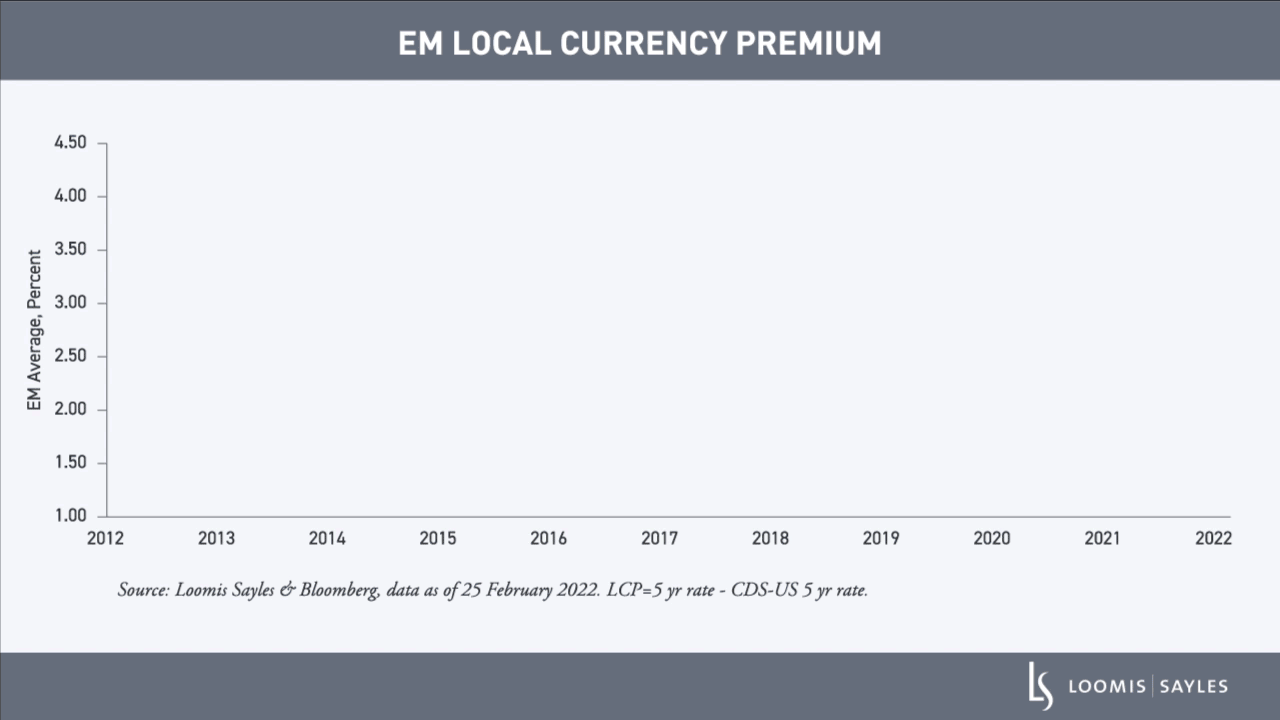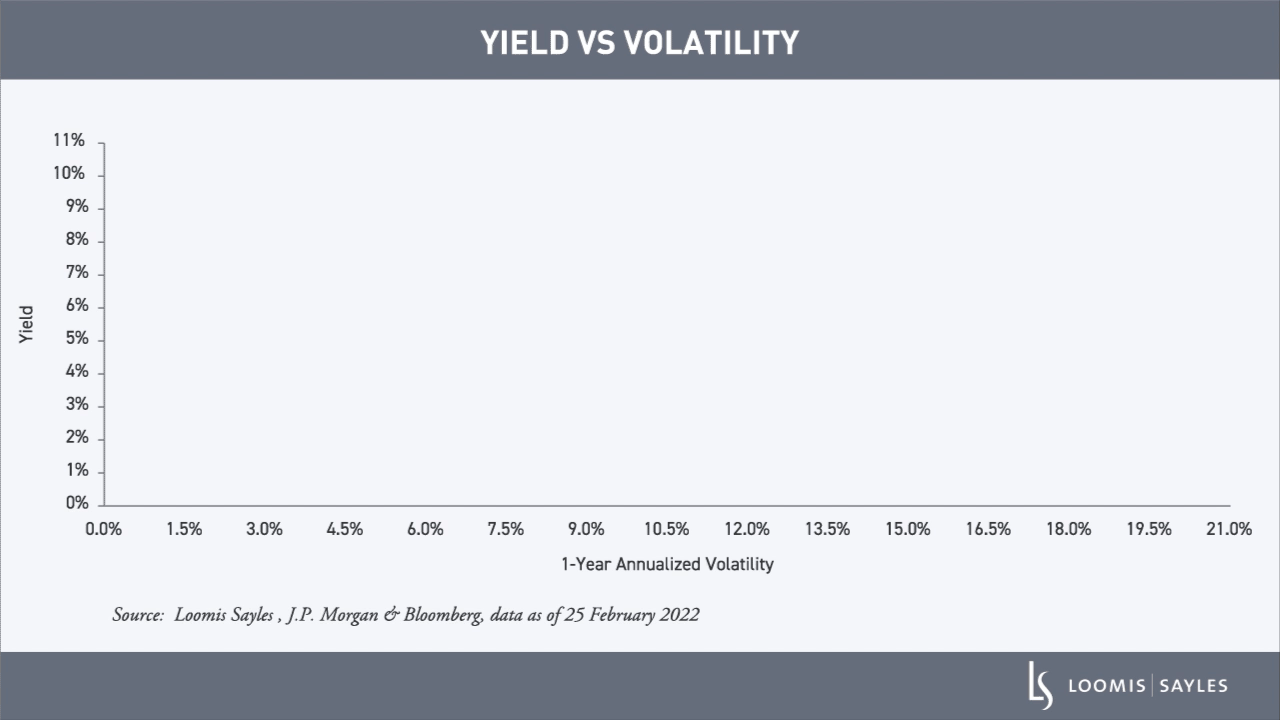By Andrea DiCenso, Alpha Strategies Portfolio Manager, Greg Hadjian, Senior Sovereign Analyst, and Peter Yanulis, Alpha Strategies Portfolio Manager
Strategic asset allocation doesn’t typically preclude investing in volatile assets—when done judiciously it can likely benefit from them. A main ingredient is an accurate assessment of the risk and the return potential a portfolio requires. As we gauge the broad opportunity set available to investors, we believe one of the more volatile sectors may be offering a level of potential return that accounts for its risks.
Consider the sharp divergence in monetary policy cycles between emerging markets (EM) and developed markets (DM). EM hiking cycles are well underway and reaching maturity in some cases (e.g., Brazil), while core DM central banks are just beginning their hiking cycles, though a lot is priced in now (e.g., US). In our view, this policy rate divergence could be creating interesting investment opportunities in EM local markets. Global central banks have been confronting a broad-based acceleration in inflation, which has reached historically high levels. Because EM inflation has outpaced average DM inflation, EM central banks have appeared to respond more proactively and aggressively in comparison.

Assessing Risk: Peaking EM Inflation?
In line with global inflation trends, sequential EM inflation generally remains high. Persistent supply chain issues, along with strength in commodity prices, suggest that risks to inflation are biased to the upside. In the near-term, the escalating Russia-Ukraine war is adding further price pressure to commodities; namely, grains, oil, natural gas and metals prices.
While it may be early to call a peak in EM inflation, EM yields rose significantly in 2021 as inflation surprised to the upside. EM central banks responded appropriately by hiking rates well before the Federal Reserve’s (Fed's) hawkish pivot.
Higher EM rates now reflect more hawkish central bank policies as the EM nominal yield advantage over DM stands at 470 basis points,[1] the highest level in more than 10 years.
Local Currency Premium
We believe EM local rates appear cheap versus EM US dollar sovereign credit. The “local currency premium” offered to investors—a proxy for the difference between the yield on a local-currency bond and a US-dollar-denominated bond—currently looks attractive after adjusting for inflation and geopolitical tensions. In other words, EM local interest rates are trading well above consensus inflation expectations given the early actions of EM central banks. Possible explanations for this include high uncertainty around the inflation outlook, investor uncertainty regarding Russia, expectations for currency depreciation and risks related to the fiscal accounts.

Pricing Risks and Opportunities
Despite improved valuations, EM local rates could remain under pressure if global inflation fails to decelerate, as some investors expect, and core yields continue to increase. Furthermore, we are experiencing a volatile period for EM currencies as supply chain issues pressure global growth and the Fed kicks off its hiking cycle. Geopolitical risk also warrants a higher cost of funding for local issuers.
However, if volatility subsides in the year ahead as tightening cycles advance and are better telegraphed, we believe the noted risks have created a potential buying opportunity in EM local markets.
Conclusion
Currently within the EM debt universe, we think investors have an unprecedented range of potential options across more than 80 countries, offering diversification through currency, credit quality and maturity (represented by the benchmarks below). In our view, tactical management across the broader universe could enhance a strategic asset allocation seeking to capture the full diversification potential from emerging markets, inclusive of local exposure.


[1]Source: Loomis Sayles, Bloomberg, as of 28/2/2022. Average 5-year EM swap yield minus 5-year DM swap yield.
MALR028722
Diversification does not ensure a profit or guarantee against a loss.
Commodity, interest and derivative trading involves substantial risk of loss. This is not an offer of, or a solicitation of an offer for, any investment strategy or product. Any investment that has the possibility for profits also has the possibility of losses.
Performance data shown represents past performance and is no guarantee of, and not necessarily indicative of, future results.







